When Do Indian Ringnecks Get Their Ring?
The Indian ringneck parakeet is easily recognized by the striking ring of color around its neck. But when do these popular birds actually develop their signature neck ring? For Indian ringneck owners, it can be surprising to learn how long it takes for a hatchling to fully transform into the vibrant, ring-bearing adult we know and love. This article will walk through the timeline of an Indian ringneck’s development, exploring when they finally get that namesake ring.
When Indian Ringneck Parakeet Hatchlings Are Born
When Indian Ringneck Parakeet hatchlings first emerge from their eggs, they look quite different than the vibrant adults. Their bodies are covered in soft, fuzzy down feathers that are gray or beige in color. This downy coating helps keep the chicks warm since they lack the full plumage of mature birds.

Hatchling ringnecks have much paler and less developed beaks and feet compared to adults. Their beaks are often a light pinkish color that later turn color as they grow. The feet at hatching are also light beige or pinkish.
One of the most notable differences is the complete lack of a neck ring in newly hatched chicks. The signature ring of color around the neck doesn’t begin to appear until about a year later. Without this bright ring, hatchlings look very plain and nondescript. It’s nearly impossible to determine the whether a ringneck is male or female without DNA testing. Male and female hatchlings look exactly the same.
Their eyes remain closed for the first several days after hatching. Over time, they open and may get lighter brown irises around the pupils. But the eyes lack the bright reddish orange eye rings that are distinctive in adults.
Overall, newborn Indian Ringneck Parakeets have a scruffy, gray appearance very unlike the colorful plumage associated with these parrots. Only through maturation do they gain the green bodies, vivid neck rings, and orange accents that make the breed so recognizable. It takes time for them to grow into their namesake neck rings.
Read our article on the Overview, Characteristics and Care of Indian Ringneck Parakeets
Fledging Phase of Indian Ringnecks
The fledging phase occurs when Indian Ringneck chicks are around 5-6 weeks old. At this stage, they are developing flight feathers and getting ready to leave the nest. Their juvenile plumage starts to come in, replacing the gray fuzzy down.
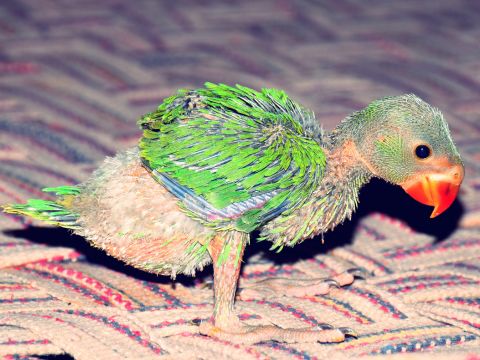
During fledging, the chick’s wings and tail take on a greenish hue as feathers grow in those areas. The body also loses some of the gray down and begins showing green feathers emerging underneath. However, the green color is paler and duller compared to the more vivid emerald hues of an adult.
Still at this point, there is no sign of a neck ring, besides maybe a very faint pale shadow.
As they test out flapping their new flight feathers, the movements may seem awkward and uncoordinated. Fledglings are gaining independence, able to leave the nest, but they still have a ways to go before skillful flying.
Vocalizations provide clues to the sex of fledglings, as males may chatter and mimic more sounds. But males and females still look identical in their juvenile plumage.
Overall, this fledgling period shows progress from the hatchling stage but Indian Ringnecks at this phase lack the defined adult features. Their true colors and neck rings have yet to fully emerge.
First Molt of Indian Ringneck Parrots
Indian Ringneck Parakeets typically go through their first molt when they are around 6 to 12 months old. This involves shedding some juvenile feathers and replacing them with a more mature plumage which, marks increased coloration of the feathers. However, males will continue to be without their ultimate symbolic ring.
Molting is the natural process during which birds shed old and damaged feathers and replace them with new ones. It’s a crucial part of their life cycle as feathers can become worn, faded, or damaged over time. Molting allows birds to maintain healthy and efficient flight, insulation, and overall appearance.
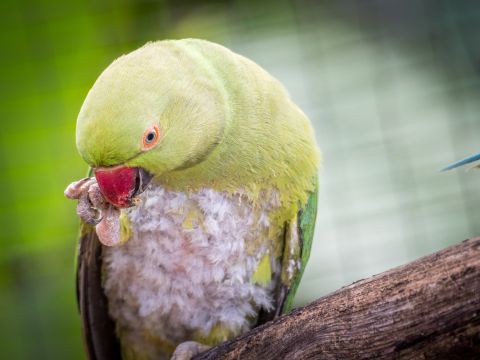
The frequency of molting varies depending on factors such as the bird’s age, species, health, and environment. Most birds, including Indian Ringneck Parakeets, experience a major molt once a year, usually during the late summer or early fall. During this period, they might lose and replace a significant number of feathers, which can sometimes affect their appearance.
In addition to the annual molt, birds also undergo minor molts throughout the year, during which they might replace a few feathers at a time. These minor molts are less noticeable but still important for feather maintenance.
It’s important to provide adequate nutrition and care during the molting period, as birds require extra energy and nutrients to grow new feathers. A balanced diet rich in essential vitamins and minerals will support healthy feather regrowth and ensure your Indian Ringneck Parakeet’s well-being.
Ringneck Parrots Mature – The Adult Plumage Emerges
It takes 18-32 months for an Indian ringneck parakeet to fully acquire its adult plumage which means, the parakeet’s feathers have reached their mature and definitive colors, patterns, and markings characteristic of their species and gender.
In terms of gender differences, male and female Indian Ringneck Parakeets go through different color transformations as they mature:
Male Indian Ringneck Parakeets:
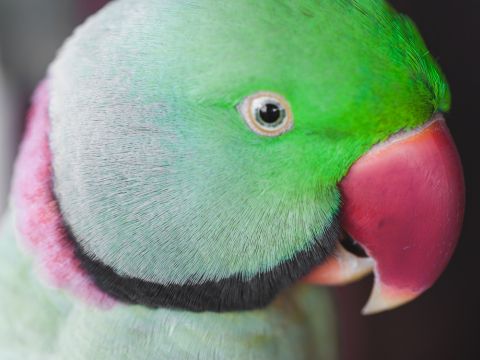
- When male Indian Ringnecks are young, they often resemble females in coloration, displaying a more subdued and duller appearance.
- As they reach sexual maturity, usually around 1 to 2 years of age, male Indian Ringnecks undergo a remarkable transformation. Their plumage becomes more vibrant and brilliant, displaying the characteristic bright green body color and the distinctive ring around their neck.
- The ring around their neck becomes more pronounced and vibrant as they mature, making it a prominent feature in adult males.
Female Indian Ringneck Parakeets:
- Female Indian Ringnecks maintain a more subdued appearance even as they mature. They do not develop the same vibrant green coloration or the prominent neck ring that males have.
- Their plumage tends to have more of a mixed green and grayish appearance, and they lack the bold color changes seen in males.
- The primary coloration of females stays relatively consistent as they grow older.
It’s important to note that while the above descriptions are common trends, there can be individual variations among Indian Ringneck Parakeets. Factors such as genetics, health, and diet can also influence the quality and timing of plumage changes. Additionally, some color mutations of Indian Ringneck Parakeets can deviate from the typical color patterns seen in the wild-type (natural) birds.
Read our article on if it is possible to teach an Indian Ringneck to talk
Conclusion
For Indian ringneck owners, it takes patience for that iconic neck ring to emerge. But the wait is rewarding. Seeing a chick develop from a drab hatchling to a vivid, ring-bearing adult is an exciting process. The transformation highlights why Indian ringnecks make such charming and alluring pets.

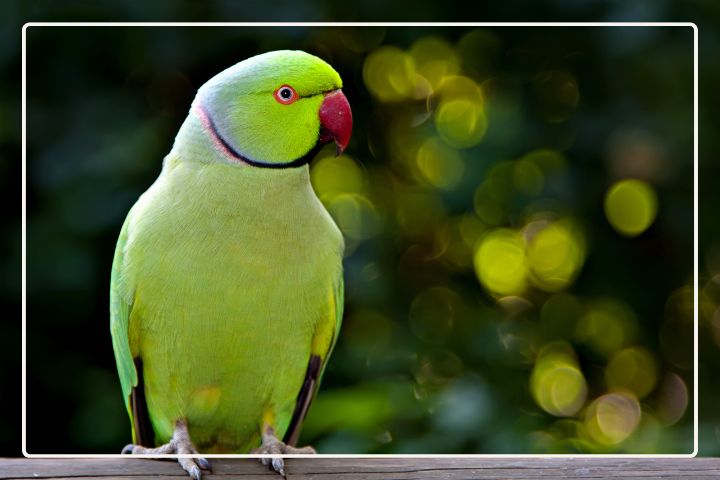


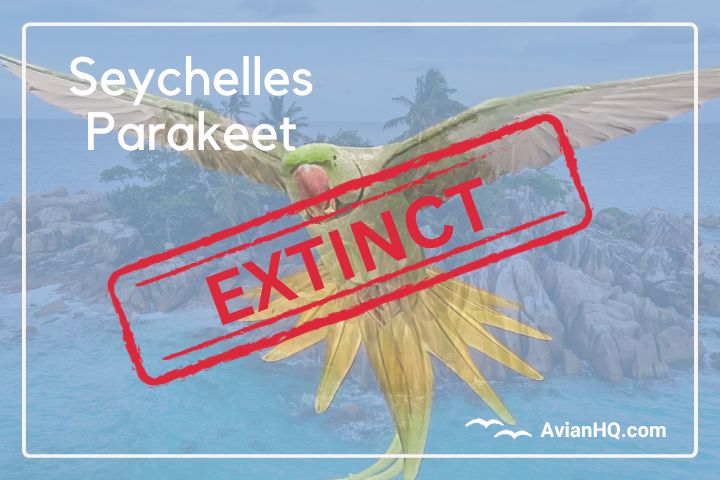


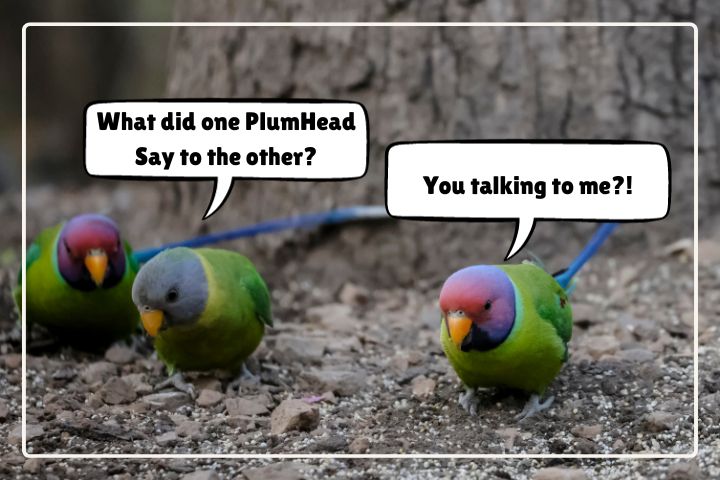
I got what you intend,saved to my bookmarks, very nice web site.